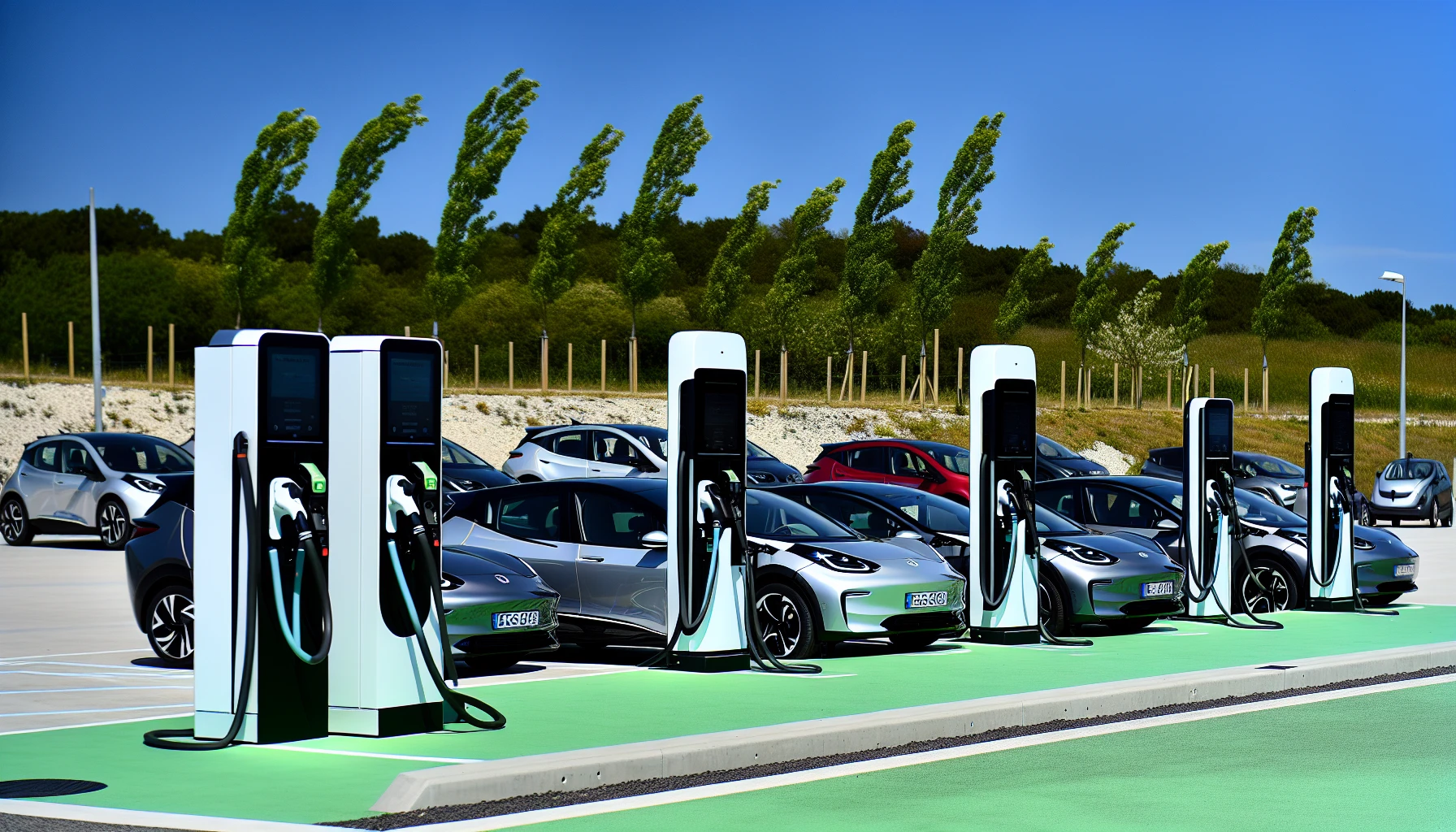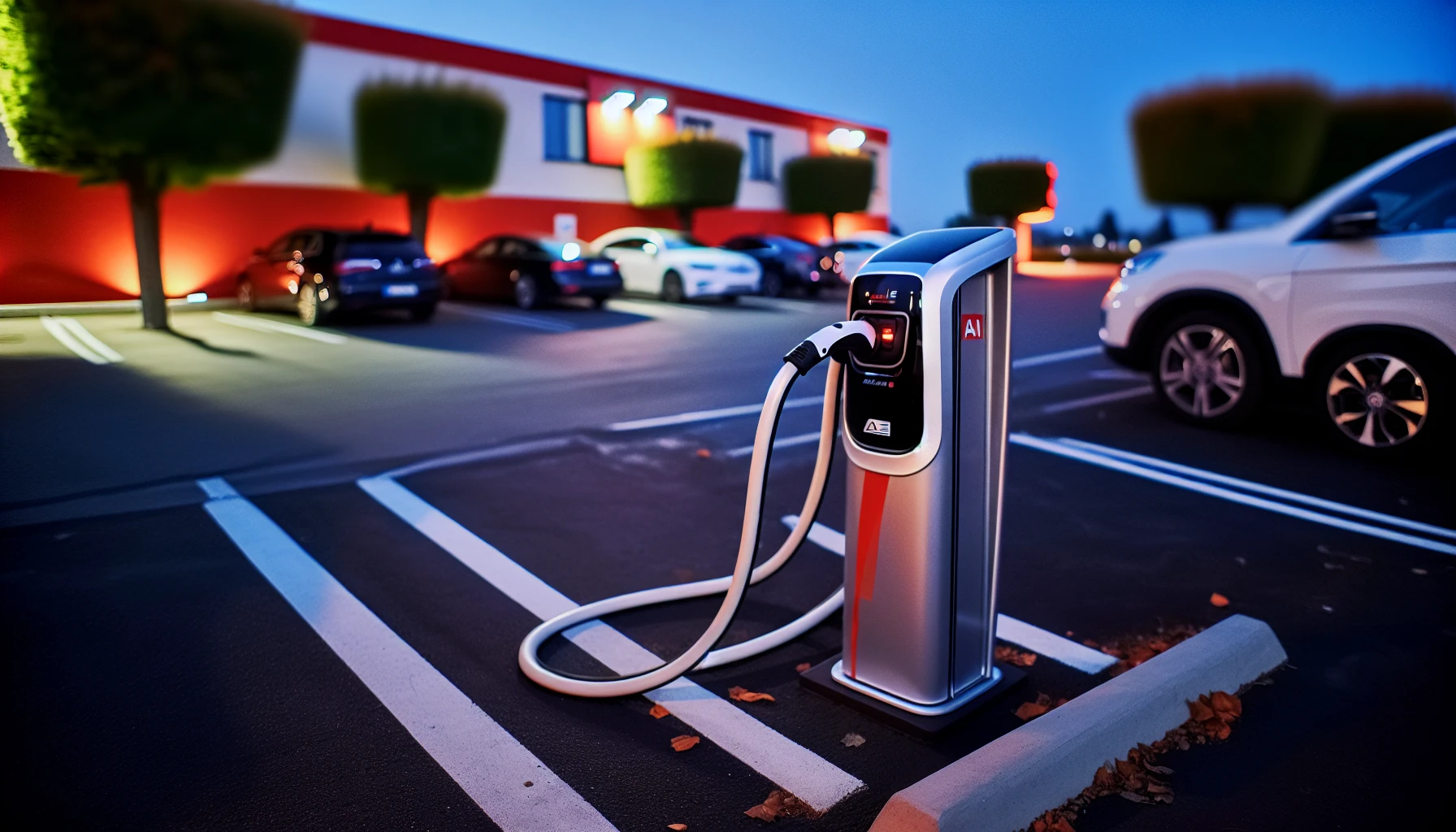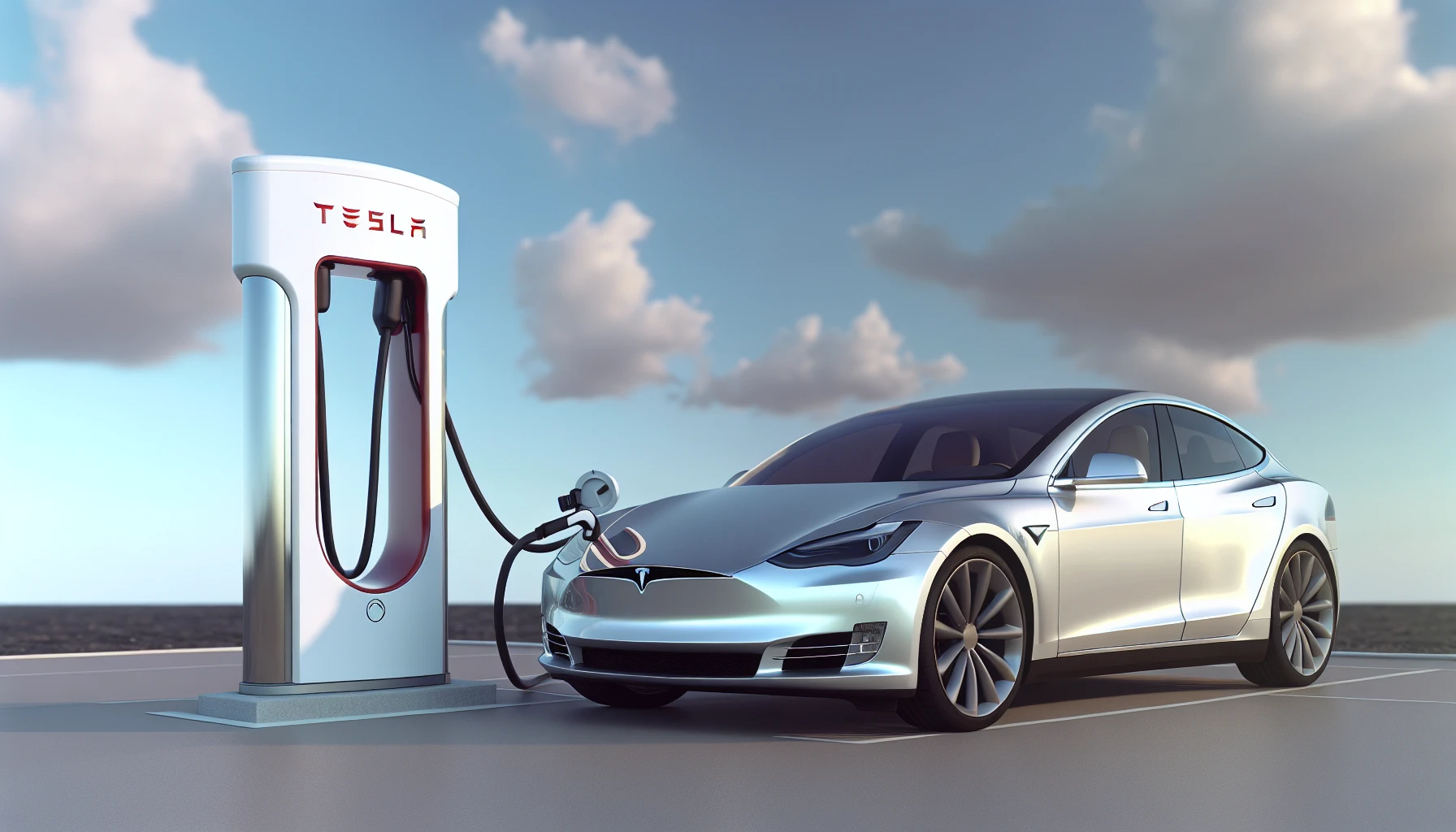Understanding How Long Does It Take to Charge a Tesla: Charging Times Explained
Owning a Tesla means being able to drive an impressive electric vehicle and, at the same time, take advantage of efficient charging solutions that bring ease and flexibility. No need to panic about finding the nearest gas station - Tesla has developed multiple methods for keeping your car charged so it’s always ready for driving. But how long does it take to charge a Tesla? The answer will depend on various factors; knowing them can ensure you fully use your electrical ride experience.
This blog post explores all accessible options regarding charging regarding Tesla models and other features impacting speed, such as electricity source. Then, it offers suggestions on the most suitable time to enjoy optimal effectiveness from this tech masterpiece automobile! Let us jump into our journey learning everything about proficiently charging one’s unique Tesla model type!
Key Takeaways
- Tesla offers three main charging options – Home, Destination, and Superchargers- enabling owners to select the best method for their needs.
- Charging times vary depending on the Tesla model and type of charger used.
- Optimizing your electric vehicle’s performance requires a well-planned charging schedule, strategically using Superchargers, and adhering to battery health guidelines.
Tesla Charging Options: Home, Destination, and Superchargers

Tesla caters to the varied requirements of electric car owners with their different charging solutions. Home charging, destination chargers, and Tesla Supercharger technology offer a comprehensive range of options to make powering up your vehicle easy and efficient, depending on what suits you best. Knowing these three critical Tesla charge systems should help you decide which type suits your needs and lifestyle.
Home-based recharge includes Wall connectors offering diverse rates plus convenience, Mobile Connectors providing power supply while on the move, and Destination Chargers delivering slower levels at places such as hotels or eateries ideal for stays away from home or topping off after long journeys. Last but not least are the rapid speed Supercharge stations when fast results are needed during traveling visits, etc.
Home Charging: Wall Connector and Mobile Connector

Tesla provides EV owners with the most convenient and cost-effective home charging options. The Wall Connector is arguably their best choice as it offers up to 44 miles of range per hour of charging, which makes it more potent than the Mobile Connector while still featuring Wi-Fi capability and allowing users to charge during off-peak hours for optimal battery performance. Meanwhile, a more economical option comes in with 30 miles of range per hour that can be used via different outlets. Making this solution very versatile when at home, plugging your vehicle into an outlet whenever its energy levels drop below 20 or 30 percent should also be taken into account by setting “Daily” limits on how much you wish your car’s battery to recharge up to - usually somewhere around 80 or 90%.
Destination Chargers: Convenient Charging Away from Home

Destination Chargers are an optimal solution for charging electric vehicles away from home. These Level 2 chargers provide 44 miles of range per hour and a much slower rate than Superchargers, enabling the convenience of end-of-trip or overnight fast DC charging at popular locations like hotels, restaurants, resorts, and other destinations. Although these charger services are usually free, extra fees could be associated with regular parking rates, depending on the location.
Utilizing Destination Chargers throughout your journey instead of solely relying on Supercharger stations can help you maintain battery health and ensure that your Tesla is always ready when it’s time for another adventure! It offers users added peace of mind since they know their car will have enough charge to get them wherever they need without any hassle in finding one again if needed mid-trip.
Tesla Superchargers: The Fastest Charging Solution

Charging a Tesla using one of the many Superchargers is simple; plug your vehicle into the station and let it set. The cost per kilowatt-hour varies from $0.25-$0.50, depending on your location. These charging stations offer rapid power that can give up to 200 miles of range for some models within 15 minutes, thanks to advanced battery management system technology. With an expansive global network spanning 25,000+ Supercharging locations across highways worldwide, electric vehicles like cars will only be stuck with a means of refueling or recharging, ready for any journey when needed most!
Charging Times for Different Tesla Models

Understanding the charging times of various Tesla models can be helpful when planning an electric vehicle journey. The time needed for a full charge will depend on factors such as battery capacity, temperature, and state of charge. I have provided some estimates below.
The Model 3 typically takes around 25 minutes to reach 80% power using a Supercharger, while Models Y, S, and X take 30 minutes or more. It is essential to remember that these figures may vary depending upon your specific Tesla model’s battery capability and other elements like temperature levels, etc.
Finally, knowing how long it takes to get your desired voltage level from each type allows you to optimize convenience and efficiency during each EV experience with any make/model under the umbrella brand name – TESLA!
Tesla Model 3 Charging Times
Tesla’s Model 3 is widely known for its outstanding range and power. But how long does it take to charge this vehicle? Charging times can depend on the type of capturing device used and the current battery capacity in the Tesla Model 3 itself. When assessed using a Supercharger, 80% maximum capacity takes about 25 minutes to reach.
Meanwhile, when you’re at home with a Wall Connector installed, approximately 10 hours should do it from empty to full-charge states, somewhat less if already partially recharged beforehand! Charging your car using a NEMA 14-50 charger will call for 10–12 hour cycles. Still, Destination Chargers boast impressive rates such that 3044 miles could be juiced every 60 min duration/periods onwards, thus allowing flexibility within journeys & making sure trips are undertaken without concerns over running out soon after starting!
Tesla Model Y Charging Times
Tesla’s Model Y offers a comfortable and practical electric vehicle experience, but what about charging times? With the Supercharger connected, this EV can reach 80% of its battery capacity in around 25 minutes. This speedy charge means you’ll be back on the road with minimal waiting time.
Using the Wall Connector at home, it is estimated that charging your Tesla model car takes approximately 7 hours. Overnight recharging assures readiness when you need to use your vehicular asset during daytime activities – knowing how long each type of charge takes gives an advantage when devising strategies for the best use of all aspects of having an electric motorcar such as Model Y from Tesla Motors Inc.
Tesla Model S Charging Times
The Tesla Model S is known for its luxury and performance, but how long does it take to charge this electric vehicle? The time varies depending on the charging method and the car’s current state of battery life. At a Supercharger, it takes an hour to get a full battery in your Tesla Model S. Utilizing Destination Chargers can add up to 44 miles of range per hour charged, whereas having a Wall Connector at home will gain you 41 miles every single hour when recharging. Knowing these precise times lets you plan more effectively throughout your entire EV journey while keeping with the same tone & keywords, such as Tesla model, electric vehicle, wall connector, etc.
Tesla Model X Charging Times
Regarding electric vehicles, the Tesla Model X is a luxurious and spacious flagship SUV. But how long does it take for this vehicle to be fully charged? Charging times depend on which type of charger you use and the current battery level. If using one of Tesla’s Superchargers with 150kW output, then charging can occur in around 30 minutes flat.
On the other hand, if opting for Wall Connector chargers at home. They will require about 7 hours until total charge capacity, but that duration diminishes drastically when upgrading to 50Kw chargers, taking only 80 minutes max! Knowing exact details regarding its specific charging time helps drivers make sensible decisions while enjoying their rides via an EV like none other – the exceptional Tesla Model X!
Factors Affecting Tesla Charging Speed
When owning a Tesla, charging speed is an important aspect that needs to be considered. Several factors contribute to the electric vehicle’s charging rate, including battery capacity, temperature/preconditioning, and state of charge. Understanding these components can help maximize your EV’s charging performance and preserve its battery health for extended periods.
The following section outlines all the variables that affect Tesla charging speeds so you can become more aware of how best to optimize your scheduling methods to get optimal efficiency out of your car while maintaining battery longevity at the same time. Armed with this knowledge, anyone with a Tesla model vehicle should have enough information to discuss their choices regarding electricity utilization capabilities.
Battery Capacity and Charging Speed
The Tesla battery of your vehicle is an essential factor in calculating the rate at which it charges. If you have a larger size, the setting will take longer than those with smaller batteries. As the charge level nears 60% and 70%, typically towards total capacity, there will be slower recharging rates due to the battery's decreased ability for additional power absorption. This is all done to protect its longevity and ensure safety when using it. This slowdown is also expected behavior so that excessive energy isn’t added, leading to overcharge situations or stressing out cells within the batteries.
Temperature and Preconditioning
The charging speed of your Tesla can be affected by temperature, and both hot and cold temperatures may decrease the battery’s performance over time. Preconditioning is an effective solution to combat this issue before driving or plugging in to charge, as it brings the high-voltage battery up to a suitable level for more efficient charging speeds. It’s recommended that you keep your Tesla within the range of 60°F (15.6°C) - 80°F (26.7°C), ensuring optimal results when boosting power through fast charging times and maximum speeding capacity from batteries kept at their best condition with preconditioning prior use!
State of Charge: The 80% Rule
To ensure that your Tesla charges efficiently and battery life is optimized, it is advised to follow the 80% rule when setting. This means you should stop at an 80% charge level. This will help maintain good battery health while reducing the time taken for charging after reaching the set limit. Once past the mark of 80%, the power draw decreases, resulting in reduced speed rates from then on and slower completion times compared with stopping at a lower than eighty percent capacity. Following these steps can aid in efficiently using Tesla chargers alongside longer-lasting batteries.
Tips for Efficient Tesla Charging
It is critical to ensure a practical charging experience for your Tesla, requiring a sound scheduling system and the strategic utilization of Superchargers. You can take full advantage of this electric vehicle by keeping these points in mind and tending to battery health. The following sections will investigate each recommendation, so drivers get optimal performance from their Teslas and make them last longer. With suitable approaches, owners can maximize their experiences owning this model car while always staying charged!
Plan Your Charging Schedule
To ensure your Tesla is always ready to go and reduce electricity costs, it’s important to plan when charging. Setting start/end times for the charge can help you maintain control over complete battery levels. It’s also recommended that you keep the battery between 20-90% or follow instructions in the user manual while staying on a schedule of off-peak hours during charging periods – and limiting use up to 80%-90%. This will promote optimum energy efficiency and overall longevity for your vehicle batteries.
Use Superchargers Strategically
When taking a journey, Superchargers can be extremely helpful in quickly replenishing the battery. To ensure proper use of them while preserving your Tesla’s battery health, planning out stops and routes is essential - using built-in route planners or other third-party apps to identify which stations are nearby. Be sure to charge up fully before setting off so you’re not at a station longer than necessary. Consider charging times when finalizing plans, too! If staying stationary for an extended period, stick with slower Level 1 chargers instead of using more powerful units like Supercharger often.
Maintain Your Battery Health
Maintaining your Tesla battery's health for optimal performance and longevity is essential. Adhering to recommended guidelines, such as not discharging below 20% or charging at maximum capacity quickly, can prevent potential damage caused by high temperatures associated with fast-speed charging cycles. To maximize efficiency and upkeep battery life longer than expected, a charge limit between 80-90%, combined with slow speed home recharge during off-peak hours, are suggested best practices.
Summary
When you own an electric vehicle, such as a Tesla, it’s essential to consider the various charging options and factors influencing charging speed. By following some key strategies in this article - like scheduling your charge times correctly and using Superchargers strategically - you’ll ensure efficient performance while maximizing battery life for your car.
With these techniques in place, you will maximize the features of being a Tesla owner and contribute towards leading us into an eco-friendly future. All relevant variables mentioned here onboard should guarantee successful trips with no disappointments when running on electricity!
Frequently Asked Questions
How long does it take to charge a Tesla at a public charging station?
Charging a Tesla at one of their Supercharger stations takes about an hour. Connecting the car directly to a wall connector in your home allows this process to be done within 10 hours or less. Charging via regular household outlets adds three to six miles of range per hour of charging time.
How long does it take to charge to 100% Tesla?
It usually takes 8-10 hours to charge a Tesla using a Wall Connector entirely. Model 3 and Y batteries can be set within the same duration at level two 240-volt charging stations.
How much does it cost to charge a Tesla at a charging station?
When charging a Tesla, the cost is usually around $9.62 up to $18.30 for one full recharge. This is approximately 3.6 times less expensive than running a regular gas-powered car in per-mile costs. In other words, powering your electric vehicle can be more wallet-friendly!
What are the main Tesla charging options?
Tesla has various methods of charging, such as home charging with a Wall Connector or Mobile Connector, Destination Chargers for overnight stops, and quick Superchargers to use on the go. All these chargers provide an efficient way of keeping your Tesla running.
How long does charging a Tesla Model 3 at a Supercharger take?
At a Tesla Supercharger, it takes roughly 25 minutes for the battery of a Model 3 to reach 80% capacity when charging. The process is specifically tailored to Teslas and their batteries, ensuring that Model 3 drivers have an easy time.